Jeremiah Gallay’s earliest boating memories are of canoe outings with his dad on the rivers and lakes of Maryland. The experiences made a lasting impression; he took up sailing while studying art in college, and his interest in boats drifted into his studies. Fallen leaves and branches suggested floating sculpture, and he built functional watercraft in organic forms. Years later, Jeremiah created LEAF-BOAT, modeled after a fallen leaf with its edges curled upward. He drew the leaf, modified and scaled the drawings, and built the design as a cedar-strip-on-oak-frame vessel to be paddled by a crew of two.
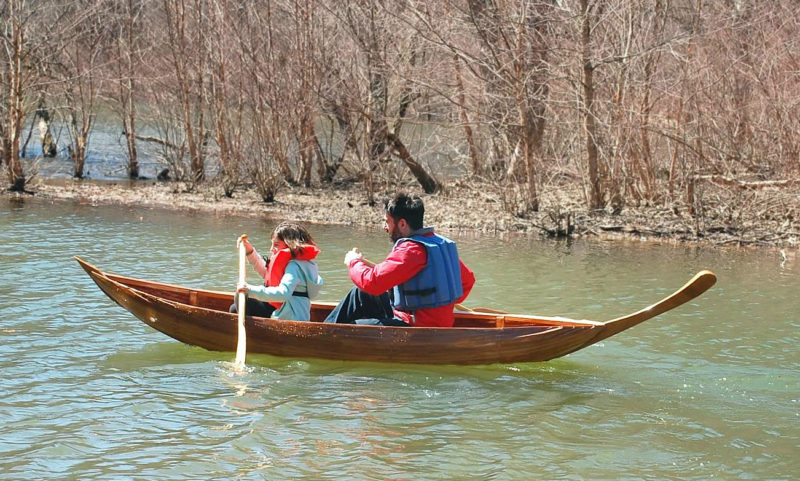 Photographs by and courtesy of Jeremiah Gallay
Photographs by and courtesy of Jeremiah GallayAfter building his first boat in 1994, Jeremiah found ways to combine his newfound love of boatbuilding with his career as a sculptor. LEAF-BOAT is one of four sculptural, tree-inspired boats.
In the early 2000s, when Jeremiah was in his late 20s, he began designing and building a more conventional craft, a 12′4″ gaff-rigged catboat. He created the drawings with a CAD program, constructed a solid keel and frames, and sheathed the hull in marine plywood—except for the forefoot. Plywood couldn’t take its compound curves, so he carved this element from solid blocks of wood. The project was complex and challenging, but after nearly four years of work, the boat was launched and it worked beautifully. Jeremiah named the boat STEADY, reflecting personal values of stability, balance, and perseverance. As an Irish friend used to encourage him, “Steady on, Jer.”
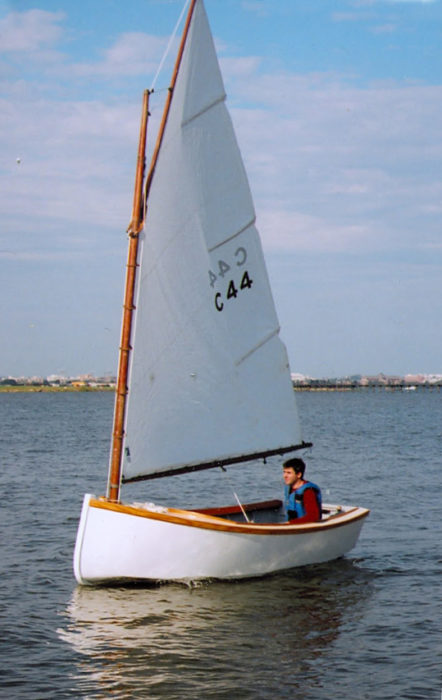
STEADY is the catboat Jeremiah designed and built.
After STEADY and LEAF-BOAT, Jeremiah was considering another project and his dad suggested a motorboat. Since Jeremiah knew less about motorboats than he did about sailboats, he decided to look for an existing design. The search led him to Paolo Lodigiani, an Italian boat designer based in Milan who had launched his company, B.C.A. Demco, nearly 30 years ago. B.C.A. is an acronym for Barche Con Anima, Italian for “boats with a soul,” and Paolo created Demco from the Latin dementia construendi or “the madness of building.” The “madness,” Paolo writes, “is clearly ironic, as I am more and more convinced that boat-building, even if to someone it can appear as a madness, is actually an excellent therapy.” Jeremiah bought plans for Paolo’s Silver 333, a 3.33m (11′) two-person runabout with a beam of 5′ and powered by an outboard of up to 20 hp.
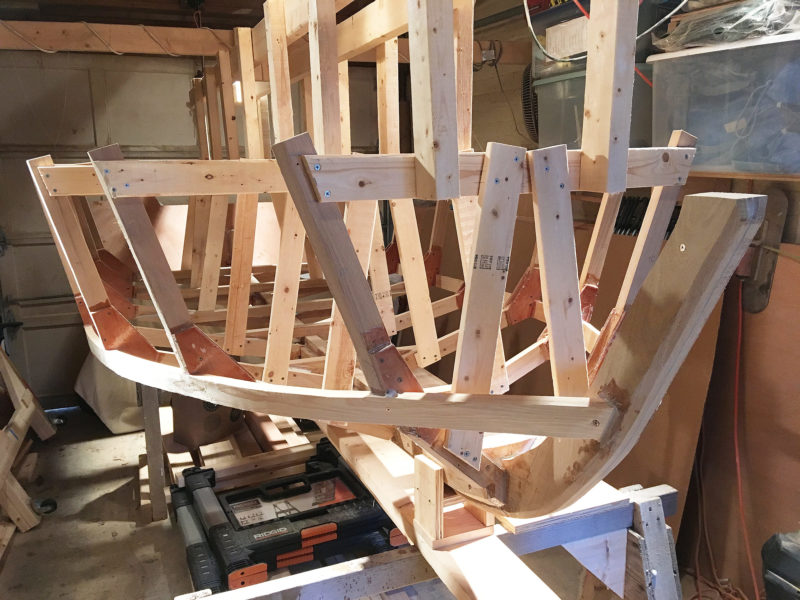
The Silver 333’s plans call for stitch-and-glue construction. Jeremiah and the boat’s designer worked together to adapt the plans for plywood-on-frame construction.
The specified stitch-and-glue construction method didn’t appeal to Jeremiah, so he wrote to Paolo, who sent CAD files to help adapt the Silver 333 to plywood-on-frame construction. The conversion took a bit of work, but Jeremiah eventually produced drawings that he could print at full size for patterns. He started construction in 2017 and continued the work over the next few years.
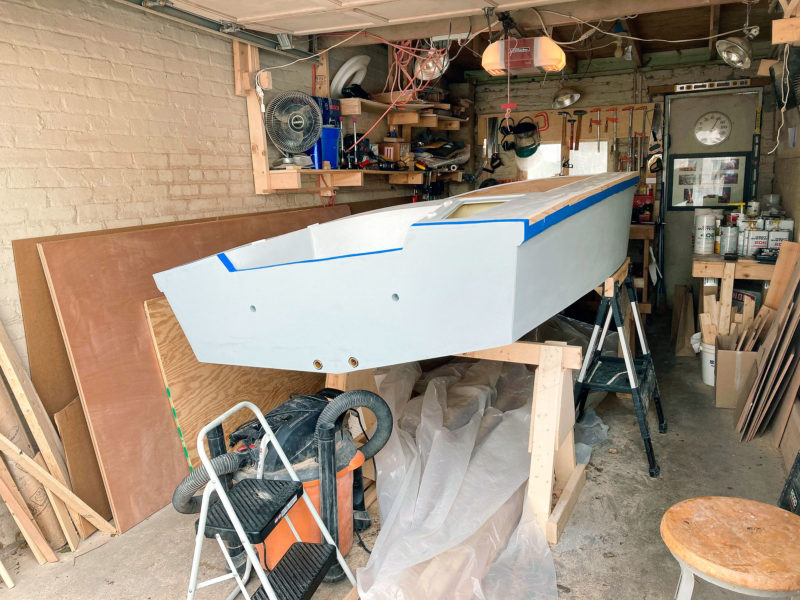
Jeremiah had two major considerations while selecting a design: it had to include a front-facing steering wheel and it had to be small enough to fit in a compact garage during construction. The 11′ Silver 333 from B.C.A. Demco turned out to be the perfect fit.
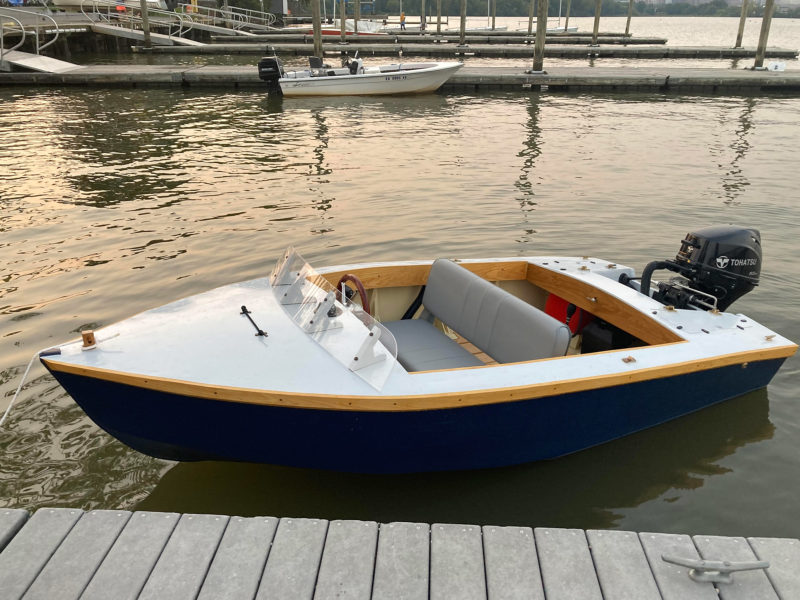
Paolo Lodigiani worked with Jeremiah to modify the boat’s method of construction. Paolo said that collaborations like this remind him that, even after 30 years in the business, there is always something new to learn.
On a fall day in 2020, Jeremiah decided to take STEADY out sailing on the Potomac River. The conditions were excellent, and he was able to go farther downriver than usual before stopping for a snack and turning around. Driving home from the marina, he began to experience some chest pain and once home, called for an ambulance. Jeremiah, then only in his late 40s, was having a heart attack. In the interest of expediency the hospital staff didn’t stop to ask his name, but assigned him the name “Hopewell.” After recovering, Jeremiah suggested to his dad that HOPEWELL might be an appropriately uplifting name for the not-yet-finished runabout.
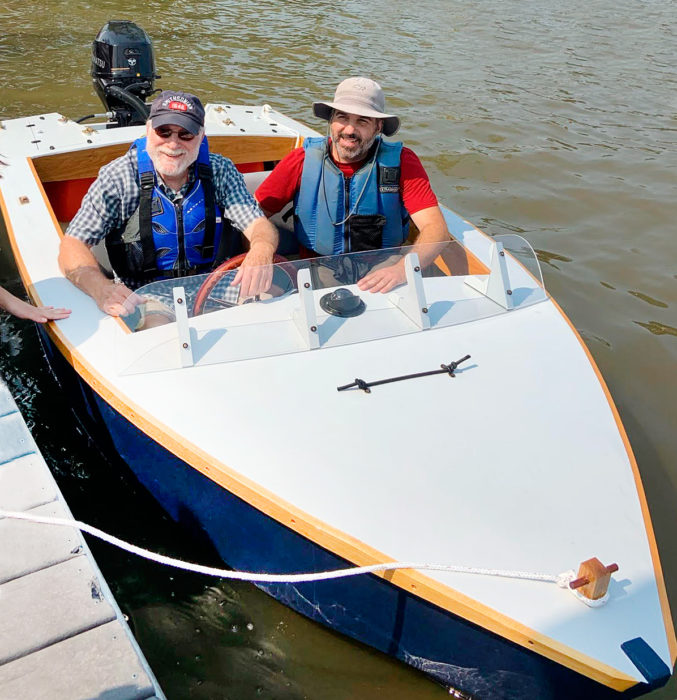
Jeremiah, right, built the boat for his dad, Joel, at left, as a way to spend time together on the water.
A year later, Jeremiah had completed the motorboat and launched it with family and friends, four-and-a-half years after the project began. In a speech he gave at the launching, Jeremiah said:
A boat, for me, is an analogy: we strive to stay afloat in more ways than one. Each of us works to develop an understanding of the world and to find our own way of exploring the unknown. This effort can be challenging, as our vision may be clouded, and our stability may be compromised. Our actions and ideas reflect our curiosity for exploration and our desire for understanding. We move through the environment using our ingenuity and available resources. Boats enable us to go places we could not otherwise go, and to see things around the bend.
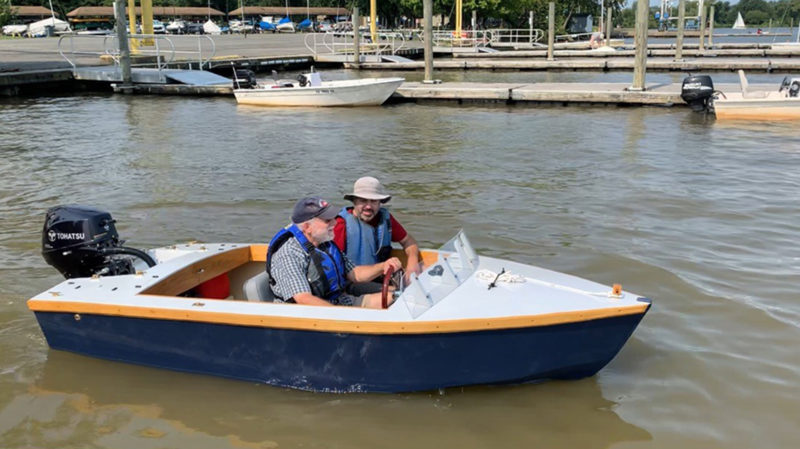
With HOPEWELL, Joel and Jeremiah can continue making memories together.
Building the Silver 333 had indeed been “an excellent therapy” for Jeremiah. His experience taught him that “boats can certainly raise our spirits as well as our physical selves.” His runabout’s name carries on the hospital staff’s message that people can overcome challenges with tenacious positive effort—HOPEWELL.![]()
Do you have a boat with an interesting story? Please email us. We’d like to hear about it and share it with other Small Boats Magazine readers.
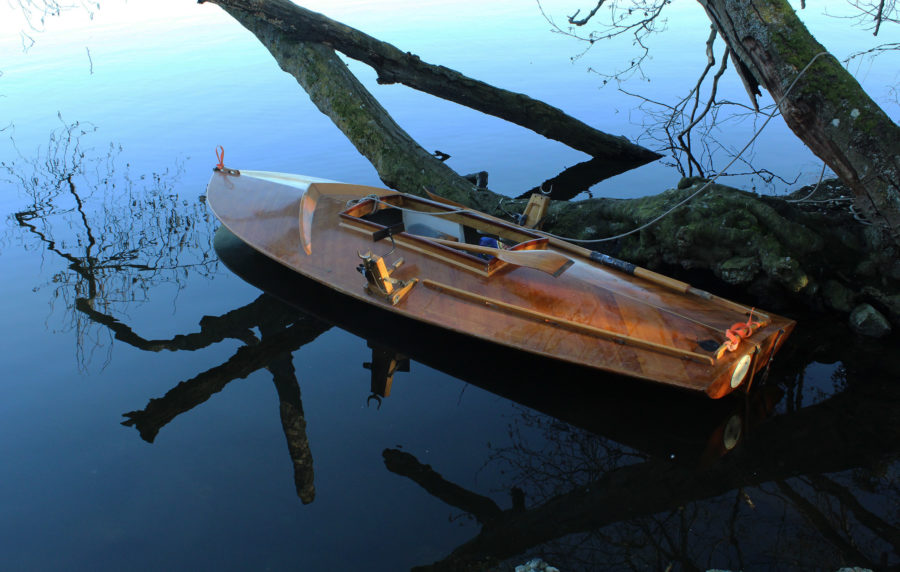
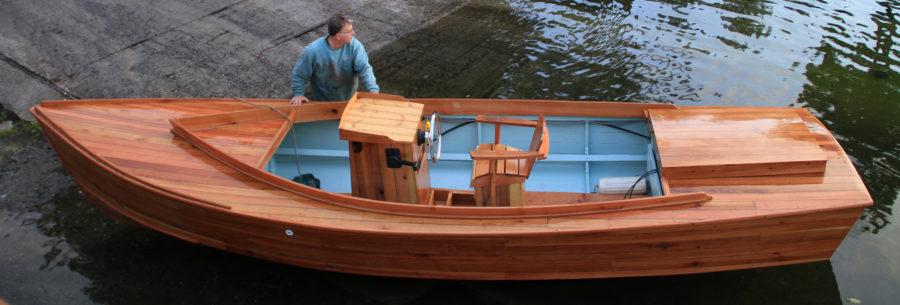
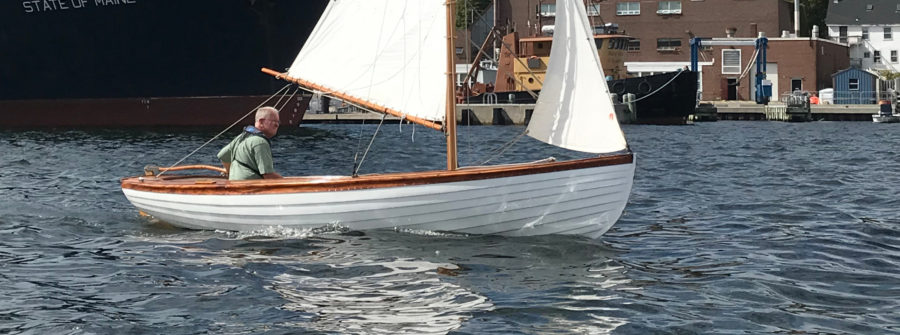
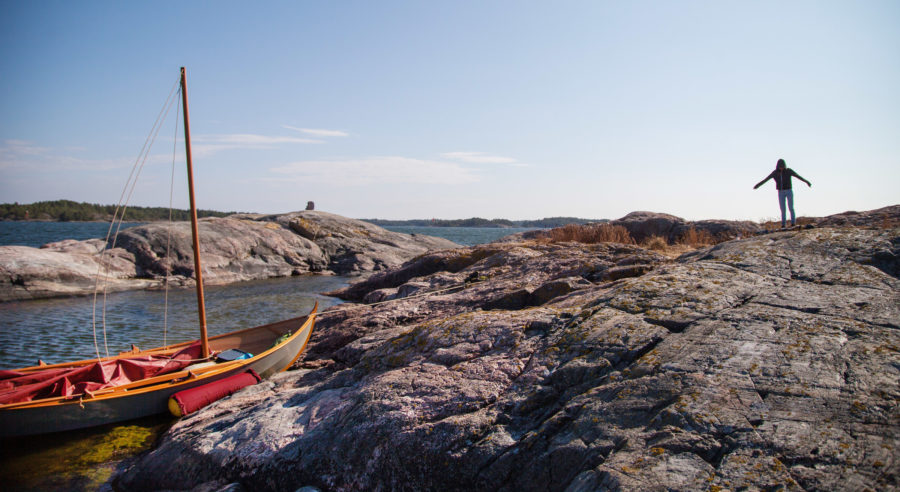
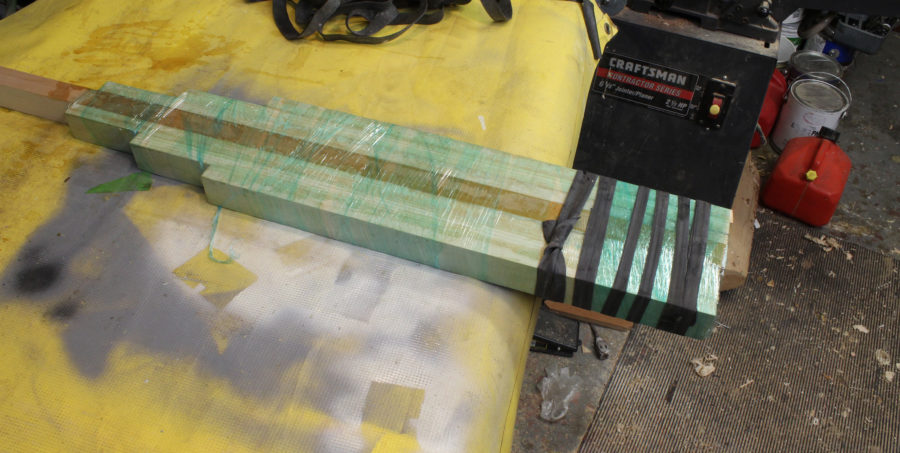
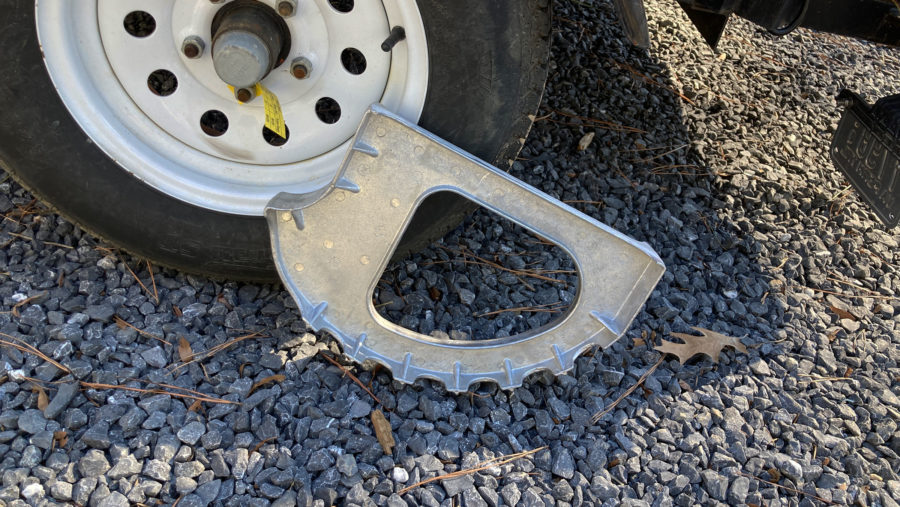
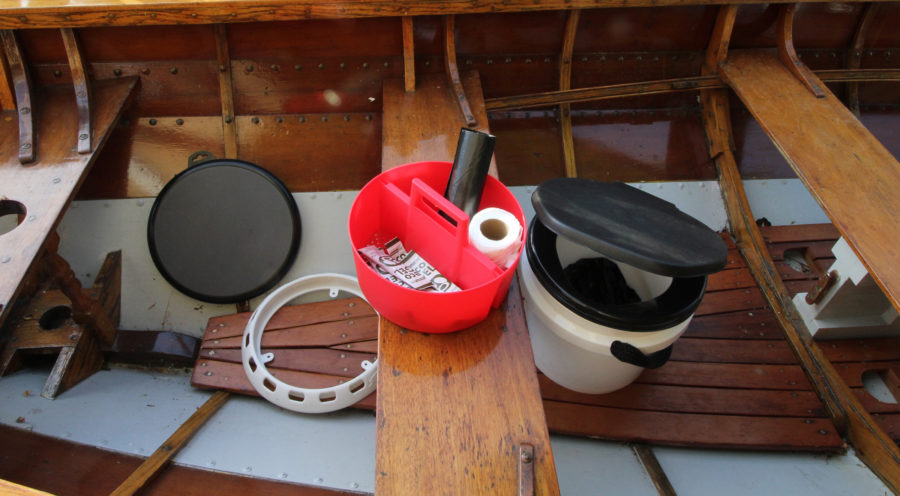
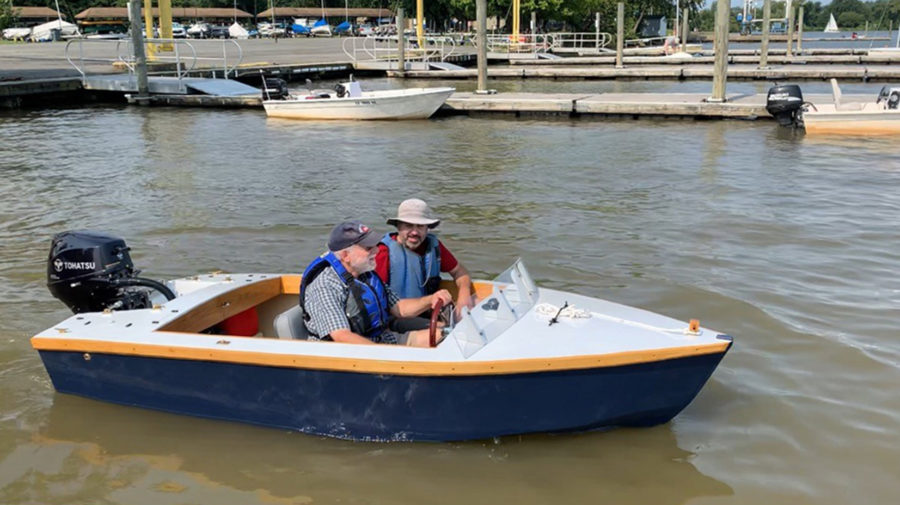

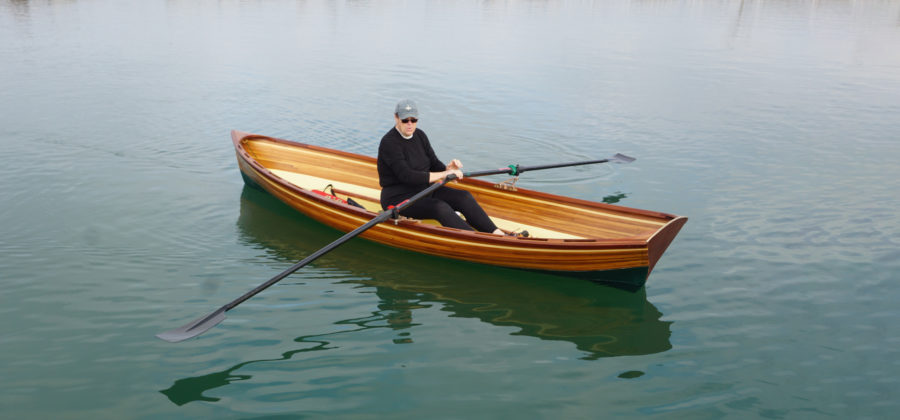
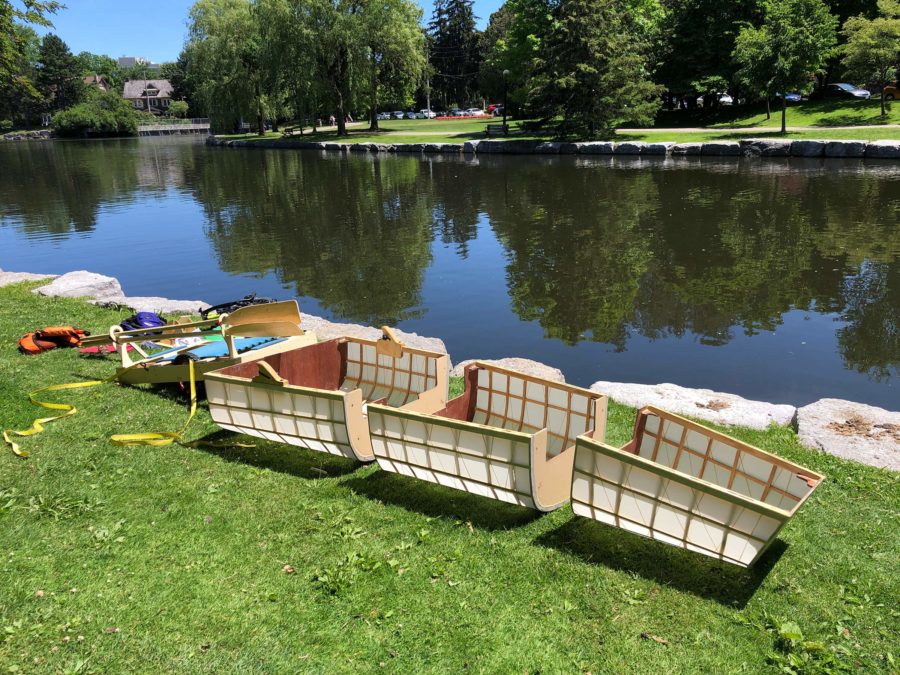
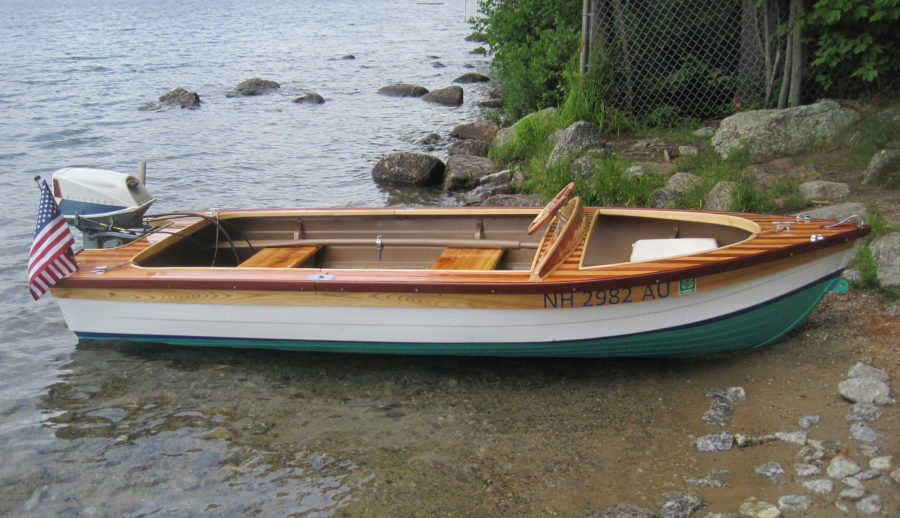
Great looking Boat. I subscribe to the boatbuilding-is-therapy theory. Now only if I can decide which of the Sam Devlin plans I purchased to use before the price of marine plywood leaves my boatbuilding dreams in the wake!
Absolutely true, boatbuilding kept my sanity during the lockdown.